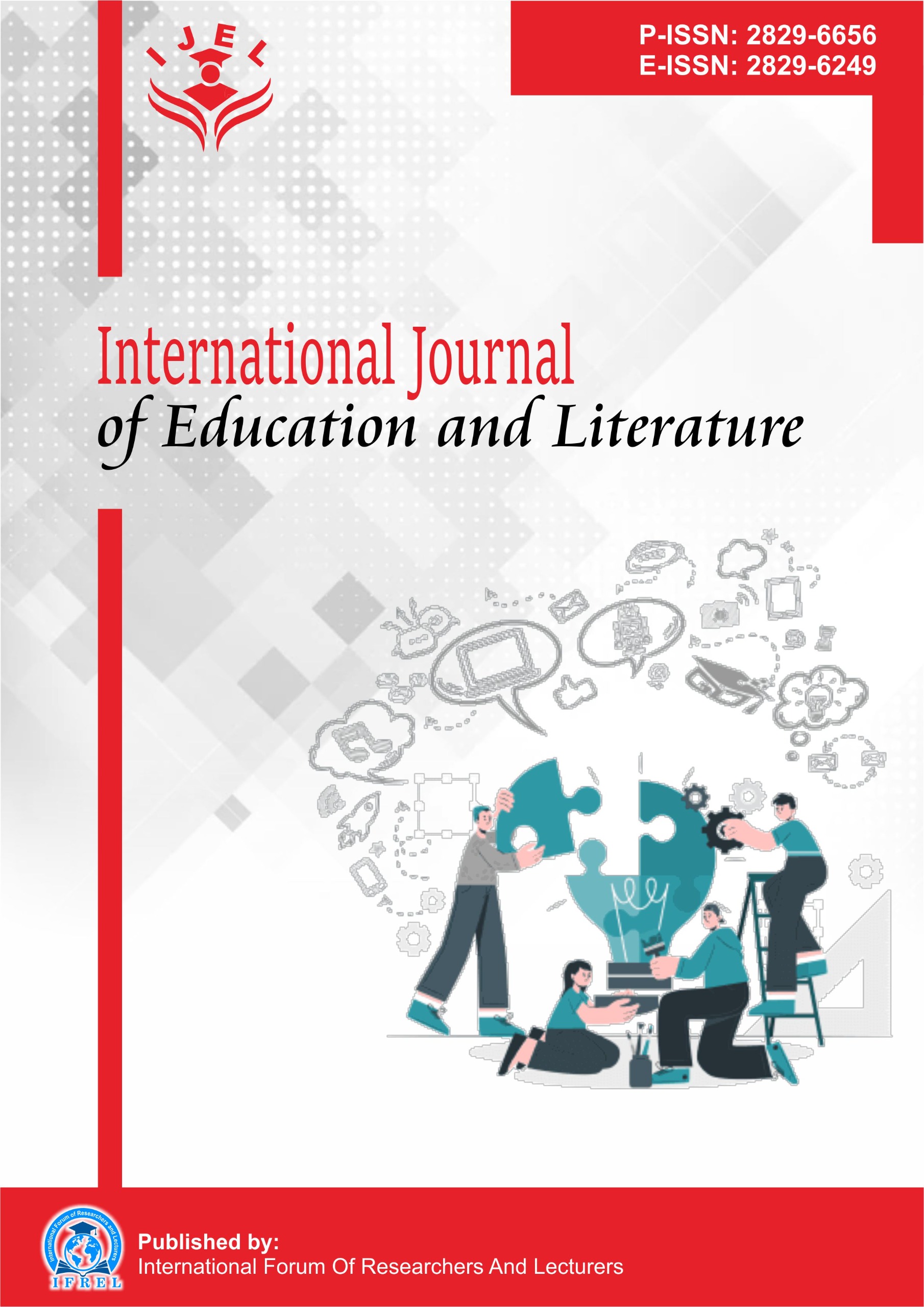Analysis of the Impact of Bullying on Students' Social Interactions at Malahayu 03 Public Elementary School
DOI:
https://doi.org/10.55606/ijel.v4i3.280Keywords:
Bullying, Dampak Psikologis, Interaksi Sosial, Lingkungan Sekolah, Prestasi Akademik.Abstract
This research was conducted at Malahayu 03 Elementary School, Brebes Regency. The objectives of this research are (1) To describe the impact of bullying on students' social interactions (2) To describe the factors that influence students' social interactions after experiencing bullying. This type of research uses Qualitative research using interview and Documentation techniques. Based on the results of research conducted through interviews, observations, and documentation at Malahayu 03 Elementary School, it can be concluded that bullying has a significant impact on students' social interactions, especially for victims. These impacts can be seen in the following aspects: (1) Emotional and psychological: Students who are victims of bullying show symptoms such as feelings of worthlessness, prolonged sadness, fear of expressing opinions, and experiencing pressure to be accepted by the group. (2) Decreased social interaction: Victims tend to be alone, avoid group activities, and withdraw from the social environment of the class. (3) Decrease in academic achievement: It was found that victims of bullying experienced a decline in academic grades and difficulty concentrating while studying, as a result of the mental pressure they experienced. (4) School environment: The existence of a culture of seniority and the lack of serious handling by the school towards perpetrators of bullying causes victims to feel increasingly unsafe.
References
Arif, M., & Noorhayati, S. M. (2024). Strengthening character education in preventing bullying behavior of students in Islamic boarding schools. Al-Fikra: Jurnal Ilmiah Keislaman, 23(2), 157–178. https://doi.org/10.24014/af.v23i2.33096
Brion-Meisels, G., O'Neil, E., & Bishop, S. (2022). School-level strategies: Interrupting bullying & harassment in schools—Toolkit. Eq-uity Assistance Center Region II, Intercultural Development Research Association.
Cunha, A. F., Rocha, F., Silva, T. C., Faias, J., & Cruz, P. (2024). Virtual reality in bullying prevention at school age. In Handbook of research on advances in digital technologies to promote rehabilitation and community participation (pp. 326–340). IGI Global. https://doi.org/10.4018/978-1-6684-9251-2.ch015
Espelage, D. L., Ingram, K. M., Hong, J. S., & Merrin, G. J. (2022). Bullying as a developmental precursor to sexual and dating violence across adolescence: Decade in review. Trauma, Violence, & Abuse, 23(4), 1358–1370. https://doi.org/10.1177/15248380211043811
Gutji, N., Wahyuni, H., Yusra, A., & Sekonda, F. A. (2021). The effect of gadget use and self-regulated learning on student achievement at SMAN 2 Muaro Jambi. Jurnal Edukasi Tambusai, 5(3), 7663–7669.
Handayani, S. W. (2024). Guidance and counseling teachers' efforts to overcome student bullying at Muhammadiyah 5 Purwantoro Vocational School [Undergraduate thesis, Universitas Muhammadiyah Ponorogo].
Kurnia, K., Astuti, I., & Yusuf, A. (2019). Verbal bullying behavior in grade IX students of SMP LKIA Pontianak. Jurnal Pendidikan dan Pembelajaran Khatulistiwa, 8(3).
Marleni, L., Pebriani, S. H., Saputra, A., & Suswitha, D. (2024). Self-efficacy in dealing with bullying behavior in school-age children. Jurnal Abdimas Pamenang, 2(2), 93–97. https://doi.org/10.53599/jap.v2i2.207
Pratama, A. P. (2023). Identification of factors causing bullying behavior in schools and implications for guidance and counseling teachers. Realita: Jurnal Bimbingan dan Konseling, 8(2), 2053–2065. https://doi.org/10.33394/realita.v8i2.8143
Rahmawati, A., Nugroho, T. R., & Setiono, H. (2021). The effect of intellectual capital on company value with profitability as an intervening variable (Empirical study of manufacturing companies listed on the Indonesia Stock Exchange for the 2017–2019 period) [Undergraduate thesis, Universitas Islam Majapahit].
Rizkia, N. D., et al. (2024). Child protection law.
Sampurna, K. (2024). The role of guidance and counseling teachers using cognitive restructuring in group counseling services to reduce bullying behavior at State Vocational School 4 Metro [Undergraduate thesis, Universitas Muhammadiyah Metro].
Sutini, T., et al. (2023). Bullying incidents with suicidal attempt behavior in adolescents: Literature review. In Proceedings of the National Nursing Seminar (pp. 177–189). Universitas Muhammadiyah Surakarta.
Trevi, T., & Respati, W. S. (2012). Attitudes of class X students of SMK Y Tangerang towards bullying. Jurnal Psikologi Esa Unggul, 10(1), 126253.
Triatmojo, A. O., & Hangestiningsih, E. (2019). The impact of bullying on the psychosocial condition of second-grade stu-dents at SDN Suryodiningratan 1 Yogyakarta. TRIHAYU: Jurnal Pendidikan Ke-SD-an, 5(3). https://doi.org/10.30738/trihayu.v5i3.6115
Wahyuni, S., et al. (2024). Discovering the impact of bullying on adolescents through bibliometric analysis. Scripta Medica (Brno), 55(2), 219–229. https://doi.org/10.5937/scriptamed55-47959
Wahyuni, S., Yusri, M. H., Febita, A. Z., & Hlm, F. A. (2025). Information services as an educational tool to overcome bul-lying in MIS schools Weigh Against. MUDABBIR: Journal of Research in Education Studies, 5(1), 507–523.
Waluyo, B., et al. (2023). Increasing knowledge regarding bullying prevention efforts through legal counseling for students. Jurnal Altifani: Penelitian dan Pengabdian kepada Masyarakat, 3(6), 842–849. https://doi.org/10.59395/altifani.v3i6.490
Wella, P., Dianto, M., & Triyono, T. (2024). The relationship between self-control and bullying behavior in students. Holistic Science, 4(3), 495–499. https://doi.org/10.56495/hs.v4i3.702
Yulianto, A., Ansori, R. W., Fauzan, A. C., & Izzuddin, A. (2024). Prevention of bullying in elementary schools through Ramadan boarding school activities. Jurnal Indonesia Mengabdi, 6(1), 61–66.
Downloads
Published
How to Cite
Issue
Section
License
Copyright (c) 2025 International Journal of Education and Literature

This work is licensed under a Creative Commons Attribution-ShareAlike 4.0 International License.







